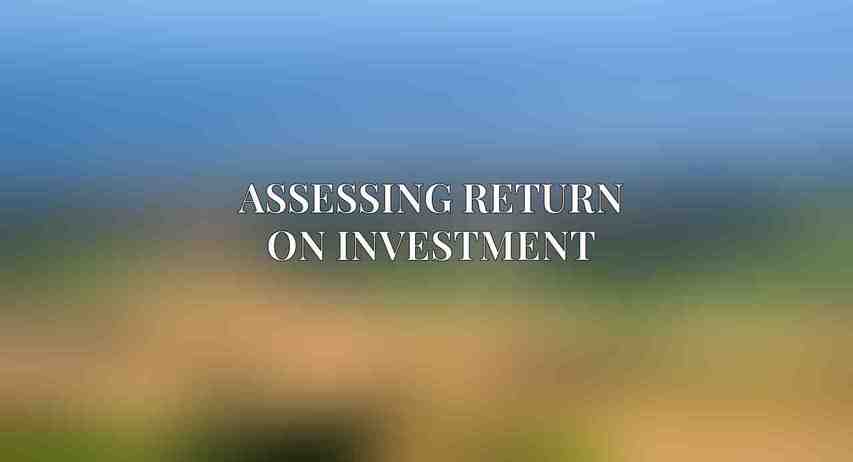When delving into the realm of event email marketing, one must first define specific, measurable, achievable, relevant, and time-bound (SMART) goals. These goals typically revolve around increasing email open rates, driving website traffic, and generating leads. By setting clear objectives, marketers can gauge the success of their campaigns effectively. It’s essential to identify key performance indicators (KPIs) that align with these goals, such as open rate, click-through rate (CTR), conversion rate, and return on investment (ROI).
Measuring and Tracking Campaign Performance
To effectively measure and track the performance of an event email marketing campaign, utilizing email marketing software and analytics platforms is crucial. Platforms like Google Analytics, Mailchimp, and HubSpot offer insights into key metrics. Setting up tracking mechanisms through email clients and website analytics further enhances monitoring capabilities. Tracking pixels, UTM codes, and Google Tag Manager are indispensable tools for understanding campaign performance.
Interpreting Open Rates
Understanding open rates is vital in assessing the effectiveness of email campaigns. Industry benchmarks and averages provide a baseline for comparison, with average open rates hovering around 20-25%. High-performing campaigns often achieve 30-40% open rates. Several factors influence open rates, including subject line optimization, sender reputation, and list segmentation. Improving open rates involves enhancing subject line relevance, establishing clear sender identification, and targeting specific email segments.
Analyzing Click-Through Rates
Click-through rates (CTR) are another crucial metric in measuring email campaign success. Industry benchmarks suggest that the average CTR falls between 2-5%, with high-performing campaigns reaching 5-10%. Factors influencing CTRs include compelling call-to-actions (CTAs), relevant email content, and optimized landing page design. To enhance CTRs, marketers should focus on crafting clear and concise CTAs, aligning email content with landing page messaging, and optimizing landing page usability.
Monitoring Conversion Rates
Conversion rates reflect the rate at which recipients take the desired action after engaging with an email. Industry benchmarks indicate that average conversion rates range from 1-2%, while high-performing campaigns achieve 2-5%. Factors influencing conversion rates include aligned campaign goals, effective lead nurturing strategies, and clear lead forms. Improving conversion rates entails ensuring alignment between email messaging and landing page content, implementing lead nurturing sequences, and optimizing lead form design for user-friendliness.
Assessing Return on Investment

Return on Investment (ROI) is a critical metric that evaluates the effectiveness of an event email marketing campaign. Calculating campaign ROI involves comparing the revenue generated against the costs incurred. Marketers can analyze metrics like cost per open, cost per click, and cost per conversion to gauge cost-effectiveness. Optimizing ROI requires focusing on campaigns with higher conversion rates and lower costs, conducting A/B testing to refine email elements, and refining targeting strategies to reach the most relevant audience.
By dissecting and analyzing the various facets of an event email marketing campaign, marketers can gain valuable insights into the success of their efforts. Utilizing industry benchmarks, tracking tools, and optimization strategies enables marketers to refine their campaigns and maximize their impact. With a data-driven approach and a keen eye on key metrics, event marketers can continually improve their email marketing endeavors to drive success.
Frequently Asked Questions
What metrics should I be tracking to analyze the success of my event email marketing campaign?
Some key metrics to track include open rates, click-through rates, conversion rates, bounce rates, and overall engagement levels.
How can I improve the effectiveness of my event email marketing campaigns?
To improve your campaigns, consider segmenting your email lists, personalizing your content, optimizing your subject lines and CTAs, testing different send times, and analyzing your data to make data-driven decisions.
Is it important to A/B test my event email marketing campaigns?
Yes, A/B testing can provide valuable insights into what resonates best with your audience, allowing you to make data-backed decisions on what changes to implement for better performance. See our take on Ultimate Guide to Email Marketing for Event Promotion
How often should I be sending out event emails to my subscribers?
The frequency at which you send out emails will depend on your audience and the type of event you are promoting. It’s important to find a balance between staying in touch with your subscribers and avoiding overwhelming them with too many emails.
What role does having a clear call-to-action play in the success of an event email marketing campaign?
A clear and compelling call-to-action is essential for guiding recipients on the next steps to take, whether it’s registering for an event, making a purchase, or engaging with your content. Make sure your CTAs are prominent, concise, and attention-grabbing to drive action.

